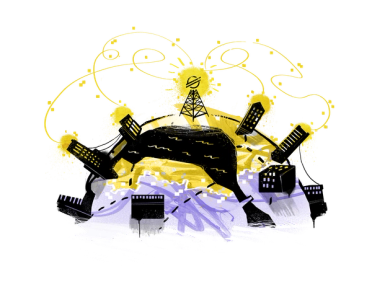
Learn
The Stellar network and ecosystem
Fast, efficient, scalable, and affordable. Explore how the Stellar network was designed to seamlessly create and send digital assets to reach users everywhere — and to make a lasting impact on the future of finance.
The Design
A future-proof network built for utility
Stellar is a public blockchain featuring a native smart contracts platform that leverages the decentralized Stellar network. Its global ecosystem of innovators leverages the decentralized Stellar network to create opportunities across borders. The platform offers tools that integrate with financial assets, building real solutions that make global financial services accessible to all.
Developer Resource Hub
Building on Stellar
Built for Payments
Scale and expand your payments globally with 24/7/365 settlement on the Stellar network. Harness the versatility of cross border payments that can power remittances, bulk disbursements, invoice suppliers, maintain treasury balances and more. Access the global ecosystem of anchors, wallets, and cash to crypto on and off-ramps on Stellar with interoperability standards that can connect your business with financial institutions, exchanges, fintechs, and more – all to deliver affordable and fast last-mile payments.
Built for Asset Tokenization
The Stellar network is the ideal platform for asset tokenization, trusted today by global financial institutions. Asset issuers and custodians can benefit from powerful, built-in features and controls to tokenize real-world assets quickly and at a low cost. The Stellar network offers a trust-based validation process, enabling you to focus on business priorities without having to worry about the security of the network. Thanks to having validators with minimal financial incentives, assets issued on the network are more likely to withstand regulatory scrutiny. Manage transactions with built-in controls for approving, revoking, and freezing assets ensuring precise asset distribution. See how simple the process is with the no-code-required Stellar Asset Sandbox.
Built for Decentralized Finance
Build DeFi applications on Stellar with Soroban, a developer-friendly, Rust-based smart contracts platform designed for scale and sensibility. With tools such as plug-and-play SDKs, Stellar CLI, RPC server, and local sandbox, Soroban provides a user-friendly experience to get developers up and running quickly. Start building with flexible, reusable functions and ready-to-use contracts. Soroban is designed with scalability in mind. Boost performance with multi-core scaling, an optimized fee model, and no pesky serialization loops – reducing the need for coding and decoding of smart contracts. Soroban also tackles the elephant in the room head-on by addressing the problem of state bloat.
Build on Stellar
Learn the fundamentals of the Stellar network and ecosystem, then discover how to leverage its smart contracts platform to build innovative solutions. Documentation, tools, and tutorials provide everything you need - whether you're starting with smart contracts or diving deep into the Stellar network.
Global Projects
Engage with a vibrant ecosystem
NGOs, corporations, universities, small businesses, governments, and solo entrepreneurs are leveraging the network, and the easy-to-use tools at their disposal, to solve the problems only they know best. Aid organizations distribute aid directly to those in need via Stellar Aid Assist. The first U.S. registered blockchain-based money market fund uses the Stellar network to process transactions and record share ownership. And thanks to more than 500k fiat/crypto on- and off-ramps, millions of people worldwide rely on financial apps built on the Stellar network.

The Benefits
Built for real world solutions
Fast to Finality
The Stellar network transactions are confirmed instantaneously1
Energy-Efficient
Research showed the Stellar network’s footprint is the equivalent to the greenhouse gas emissions from 33.7 US homes’ electricity use for one year.
Scalable
The Stellar network can process up to 1,000 operations per ledger and has processed tens of billions of operations since 2015.
Affordable
The Stellar network performs transactions for a fraction of a US penny making it one of the most cost-efficient blockchains.
1 Time To Finality (TTF) is the duration of time it takes for a transaction to be considered final in a blockchain network after consensus is reached. The Stellar network achieves consensus in under 6 seconds and relies on Federated Byzantine Agreement consensus which enjoys instant TTF.
The Numbers
Stellar network stats
10.1M
Total Addresses All-time
$0.0007
Average Transaction Cost
5.1B
Total Operations All Time: the cumulative count of individual actions that represent a desired change to the ledger and are submitted to the network…
$33.9B
Real World Assets Payments Volume
Explore Next
Your next read
The Power of Stellar
Stellar Basics
Unlock Stellar's potential through learning its efficiency and scalability.
Stellar Consensus Protocol
Stellar Basics
Learn Stellar Consensus Protocol, the efficient decentralized consensus.
Smart Contract Basics
Smart Contracts
Explore the history, concepts, and applications of Smart Contracts.
The Newsletters
The email you actually want to read
Hear it from us first. Sign up to get the real-time scoop on Stellar ecosystem news, functionalities, and resources.